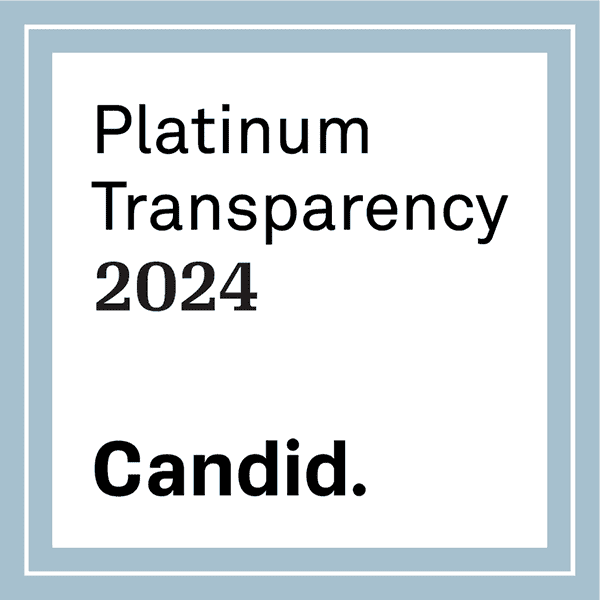
While not all individuals with PANS and PANDAS need IVIG, the path for those who do can be nerve wracking and expensive. This article is not to be construed as medical advice but rather topics to discuss with your doctor to help you prepare for IVIG as well as ideas for how to keep costs in check.
Questions For Your Doctor:
Are there infections we should test for and treat for prior to IVIG?
The answer to this question will be partially dependent upon whether or not you or your family member has a co-morbid immunodeficiency. Generally, individuals with an immunodeficiency can expect to receive on-going IVIG and there is a strong chance they will not be able to begin to clear infections successfully until they’ve received several infusions. For those who suffer only from PANS/PANDAS, most doctors will attempt to treat infections prior to IVIG to prevent failure. This often includes testing family members and close contacts for strep. Some physicians will also suggest avoiding school or public places for a period after IVIG while others suggest resuming normal activities immediately.
How many hours will the infusion take?
In general, slower infusions carry less risk of headache, migraine, vomiting, and/or aseptic meningitis post infusion. Many of the top PANS experts infuse across two six-hour days, though some individuals require even longer infusions across several days to minimize side effects.
What should I do if my child gets a severe migraine after the infusion or is showing signs of aseptic meningitis?
Aseptic meningitis is one risk of IVIG. Typically it is self-limiting and often resolves with steroids, allowing a patient to avoid lumbar puncture and receive future IVIG treatments.
Discussing a plan of action with your doctor before IVIG can prevent panic as well as unnecessary and invasive investigation in the emergency room. What does your doctor want you to do if migraine and vomiting strike on a Saturday night? Does he or she want you to administer steroids? NSAIDs? Should you fill a prescription in advance just in case? Will he/she be available for a phone call? Should you proceed to the ER? Stay home?
What dose will be used?
Typically, 2 grams/kilogram is considered “high dose” IVIG and is used to treat PANS and PANDAS. Some physicians order 1.5 grams/kilogram which is also considered high dose. Dosing can become tricky for the 5-10% of individuals with PANS who also have an immunodeficiency and require ongoing treatment with IVIG.
If you or your loved one has an immunodeficiency and your immunologist is unfamiliar with PANS, share the recent JCAP guidelines with him or her and be certain you’re comfortable with the treatment plan.
Which immunoglobulin product will you be using?
Not all immunoglobulin products are created equally. Some have greater risks of side effects than others. In particular, sucrose suspended IVIG comes with the risk of kidney damage. Children with low IgA are at increased risk of anaphylaxis from IVIG. Therefore, use of an IgA depleted immunoglobulin product is recommended to lower risk. This table provides comparison of the various brands of IG on the market including amounts of IgA and sugar content.
Where will we be doing the infusion?
Some physicians like to do IVIG in their own clinics where they can monitor patients. This can be comforting though it is often more expensive than IVIG done at an infusion clinic or within the home. Additionally, many side effects are delayed and do not take place during the infusion.
Some infusion clinics have several patients set up in one room sharing one nurse while others have private rooms for each patient. Whether at a physician’s clinic, infusion clinic, or at home, your nurse should have supplies and medications for use in an emergency. Verification that epinephrine is on hand prior to beginning the infusion is suggested.
Moving on to Money: How can I get this covered by insurance?
If you or your family member with PANS has not been fully worked up for an immunodeficiency, this is an important step. Immunodeficiency is relatively uncommon in the general population but occurs at increased rates in individuals with PANS. A co-morbid immunodeficiency dramatically improves the chances of IVIG being covered by insurance, but it also changes the long-term treatment plan, so this should be considered before moving forward.
A very common cause of denial of IVIG by insurance is receipt of the prior authorization by the insurance carrier for the medical benefits but not the insurance carrier for the pharmacy benefits. Often times your medical benefits clinician will not alert you to this when they deny your prior authorization. Make sure your doctor’s office sends the prior authorization to both at the same time to prevent a delay in treatment. This point cannot be emphasized strongly enough. Many individuals have been denied coverage for IVIG by their medical benefits clinician without explanation that the pharmacy benefits clinician is responsible for approving or denying coverage.
If your prior authorization has been denied, ask your doctor to participate in a peer-to-peer review with the insurance company. Gather all medical records you think may be helpful to your doctor and send them to his/her office. Documentation of extensive infection history can be helpful in gaining insurance approval.
If your insurance coverage is through a large company and your insurance plan is self funded (meaning UHC, BCBS, Aetna and so on administer the plan but it is funded by your company) reach out to your human resources department and explain the medical situation. Many families have had a denial overturned simply by reaching out to their human resources department.
Insurance has denied IVIG coverage even after appeal. Now what?
Generally, IVIG given in the home and infusion clinics is far less expensive than at a physician’s office or hospital. While it can be comforting to have direct oversight from your doctor during the infusion, the cost puts this option out of reach for some families. Many doctors order IVIG in home or infusion clinics as well to control costs as well as for the comfort of the patient.
Those who have IVIG ordered in home or at an infusion clinic may be surprised to learn that specialty pharmacies will negotiate the price of IVIG with you. Most doctors treating children with PANS order between 1.5 and 2 grams/kilogram of IVIG and divide it across two or more days. A 70-pound child, for instance, receiving 2 grams/kilogram IVIG would receive a total of 63 grams of IG divided across two or more days. Generally insurance companies contract with specialty pharmacies to pay roughly $128 per gram for IG, which is basically “at cost.” It is not uncommon for the same pharmacies to bill families four or five times this amount which is why it is imperative to discuss pricing ahead of time and get it in writing. Insurance companies pay roughly $85 per hour for nursing care at an infusion clinic as well as within the home. Like the cost of the IG itself, these rates are often also negotiable and most areas have several different options for nursing care. Some doctors prefer to do the first infusion at a clinic or infusion suite versus in the home. (Based upon 2023 prices).
How can I make this as easy on my child as possible (suggestions are appropriate for adults too!)?
- Work with your doctor or infusion clinician to make sure the location of the infusion will meet your child’s needs. Some children, for instance, will feel more comfortable in a private room. Others may benefit from the normalization that comes from seeing others undergoing similar treatment. Arrange for whatever you think will work best for your child ahead of time.
- Not all infusion nurses are skilled with pediatric IV starts. You may have to inquire with several infusion companies in order to find a nurse who can easily start your child’s IV. Finding a skilled pediatric nurse will be well worth your time and effort.
- Hydrate, hydrate, hydrate. For one to two days prior to the infusion as well as the morning of the infusion, increase your child’s fluid intake. This will lessen the side effects of the IVIG and make it easier for the nurse to start the IV without multiple sticks. Continuing to focus on hydration in the days following your child’s infusion will help prevent headaches. Increased salt intake can also make starting the IV easier.
- If your child is extremely fearful and anxious to the point of preventing administration of IVIG, some physicians will prescribe an anti-anxiety medication.
- Fear is relieved for some children by explaining that the IV is more like a “straw” rather than a needle. The Internet is full of images and videos of children and pets receiving IVs. You can also share a video of a child explaining IVIG for PANS. Some infusion companies provide stuffed animals with IV supplies so children can become familiar with the process ahead of time.
- Wrapping the hand or arm in a warm, wet towel about 10 minutes prior to the infusion will make it easier for the nurse to successfully start the IV.
- Numbing cream can make the child more comfortable and less fearful, however, it can also make it more difficult for the nurse to successfully start the IV which can lead to greater fear and anxiety later on.
- Infusions are long. Be prepared with meals, snacks, games, videos, and media to keep your child busy. While children can get up and walk around during their infusions, some are tired and prefer to lay low. Let your child take the lead based on how he or she is feeling.
- Especially in an infusion clinic or with a home health nurse, observe to be certain your child is getting his or her full dose of IVIG. From personal experience, some nurses will leave too much product in the bottles. There will be bubbles left in the bottles but should not be liquid left over beyond that. Know how long the infusion should take based on the flow rate.
- Be on the look out for headaches. Have a treatment plan in place with your doctor for addressing pain post infusion.
When should I expect to see improvement in PANS symptoms?
Many individuals experience relief within days of treatment. Some report a worsening of symptoms immediately following IVIG followed by improvement.
IVIG failed. Now what?
IVIG is more likely to fail when individuals have infections at the time of infusion. Early strep exposure is also tied to IVIG failure. Every bottle of immune globulin contains a different composition of antibodies based on the unique antibody production of the donors. Because of this, a 10–15 % failure rate is unfortunately expected. You can read more about this here.
If IVIG fails, don’t despair. A second round of IVIG or another treatment may be necessary to bring your loved one relief.
One very important thing to remember is that while IVIG is often considered the “best” treatment for PANS/PANDAS, there are many physicians who feel steroids and other treatments have a greater benefit and at a far smaller cost. More expensive doesn’t always mean more likely to bring relief. If IVIG doesn’t help, don’t lose hope! There are other options for restoring you or your loved one to good health.
Please note:
This is not medical advice. Please discuss IVIG protocols, side effects and treatment with your healthcare clinician.








